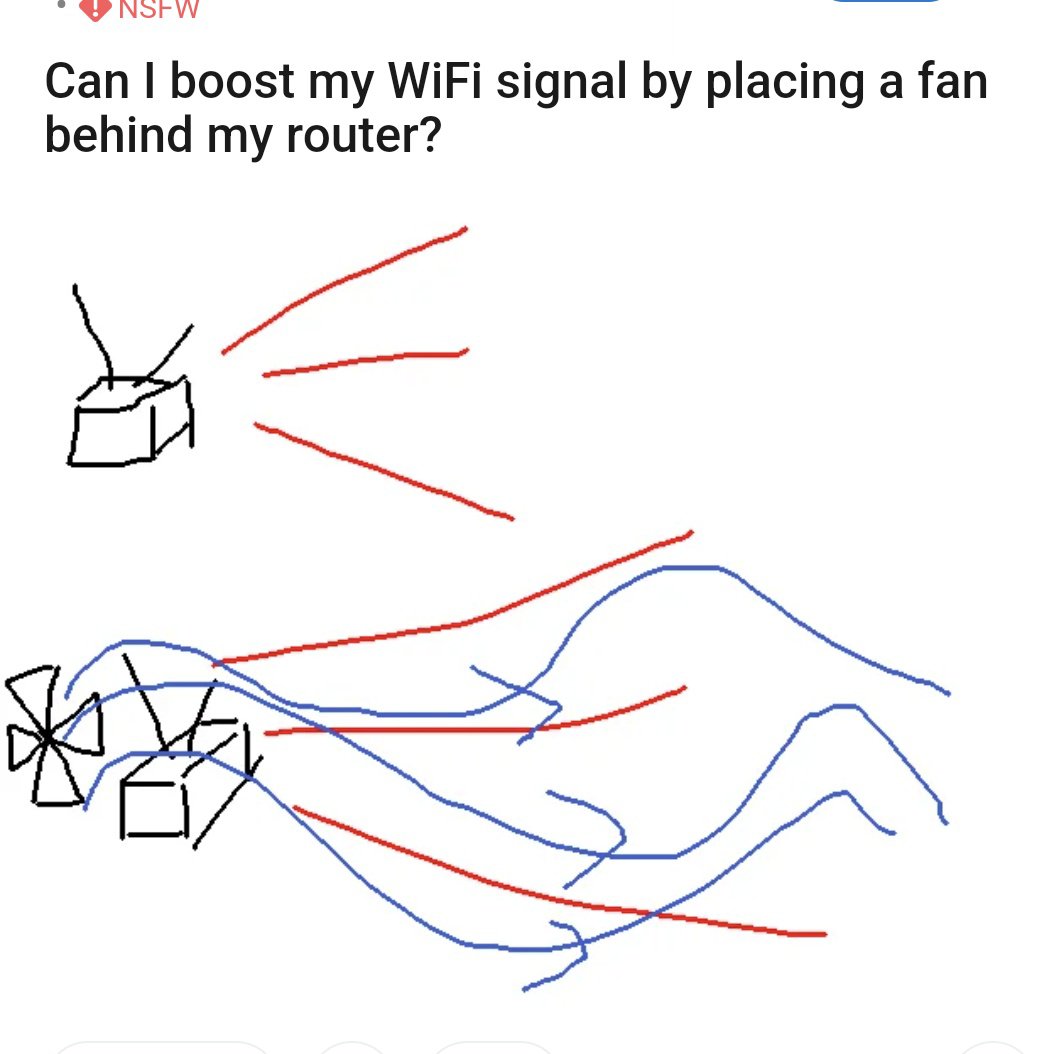this post was submitted on 12 Sep 2023
1253 points (97.7% liked)
Memes
45731 readers
1069 users here now
Rules:
- Be civil and nice.
- Try not to excessively repost, as a rule of thumb, wait at least 2 months to do it if you have to.
founded 5 years ago
MODERATORS
you are viewing a single comment's thread
view the rest of the comments
view the rest of the comments

Funnily enough this may actually have a positive impact
People used to create tinfoil, tin can or wok based reflectors for WiFi to guide the omnidirectional signal into becoming a directional one.
I think the reflective part of some mirrors is essentially tin foil, so it probably would have a mild boosting effect in the direction of the mirror
Edit: in fact if OP's fan has a rounded metal cage on it, you could take the front half off and you've basically got a WokFi setup there, with added danger
A wire in a Pringles can makes for a fabulous directional can-tenna
Also if it's close enough, the metal of the fan itself serves as a pretty decent antennae. You can accomplish the same by taping a fork to the box!
It's the silliest little lifehack yet wrapping a wire around a fork, then wrapping the other end around the router works so well
You're not wrong. Matter of fact, you're absolutely right!
Back around 2011, I used a pie pan and USB WiFi dongle to snag the neighbor's WiFi. My pie pan contraption basically tripled the signal strength, and I never had a single dropout. 👍
i have used a long tin can, similar to a pringles can before to steal a neighbour wifi back in the day. this is legit
Modern wifi APs have beamforming algorithms. No reflector required.
I've heard about this but not had loads of time to read into how it works and how effective the algorithms are. Do you happen to know about it in depth? I've wondered for a while how much efficiency is actually improved by the beamforming and what the limitations are
Like I've read about cantennas that fire 802.11g over several hundred meters, which in my understanding is obviously is out of reach for regular WiFi antenna even with beamforming algorithms (or is it? I actually don't know)
Read up on Yagi antennas.
Essentially you are stacking waves. If you have an array of trasmitters, you can have them send a constructive signal or a destructive signal as a signal "wave" passes them. Using this property, you can change the shape of the wave propagation. Think of it like throwing a stone in a pond, and then throwing in a second or third stone at the exact right moment to combine the ripples, creating a stronger wave in a particular direction depending on when and where you throw the stones.
We use it for talking to distant satellites, but then we also combine arrays of large directional dish antennas with beam shaping algorithms
Man, I've always wondered how yagi antennas actually managed to produce a directional beam vs something like a dipole. Your comment has really made it click for me, honestly big thanks! Very clear 5-9
Yep. Now imagine each element on the yagi antenna is its own antenna that can be triggered by a controller, instead of just being one big "dumb" antenna. Now by timing the "firing" of each antenna you can create a directional beam in pretty much any direction.
Yep, and the fan moving in back almost certainly will fuck up beamforming as reflections are fairly important to get the beam to do object avoidance and if your reflective surface is angled and moving quickly…
The reflective part of mirrors is silver, but yes